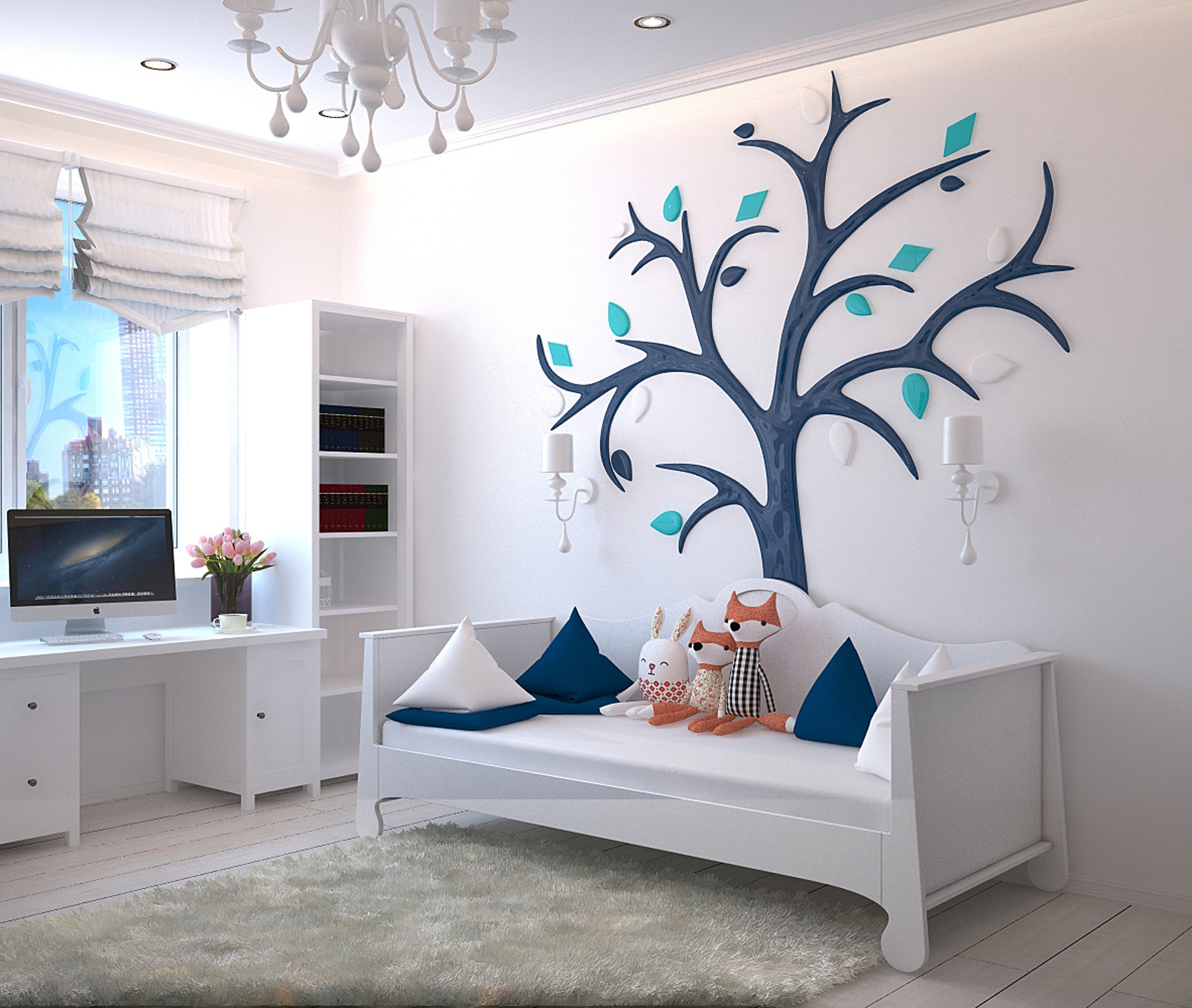(Family Features)–In cities across the country, vibrantly hued murals are often created to bring color and life to buildings, community gathering places and more.
The bold energy of large-scale murals reflects a growing trend toward a more adventurous design. It’s a style that you can easily adapt and make your own with existing decor elements that are already in your home. Explore these ideas to help spark creativity for your next project.
Make a statement. There was a time when it was considered daring to paint one wall in a room a different color. However, these days, statement walls are replacing the more subtle accent wall. A wall filled with geometric shapes or a colorful pattern is an eye-catching enhancement that can be added to just about any space.
Generally, the wall you use should be the natural focal point of the room. Be conscious of architectural details that may distract from the design. Doors and fixtures like fireplaces can be incorporated or worked around, but windows are usually too disruptive, so it’s best to avoid if at all possible.
Although the idea is to create a stand-out feature, keep colors in line with the rest of the room to maintain a sense of cohesiveness. Similarly, avoid overcrowding the room with furnishings and intricate wall art that will take the attention away from your statement wall.
Revamp furniture. Refinishing old furniture is an affordable way to outfit a newly designed room. For an on-trend look, invite some visual interest with patterns. You might choose a single color stripe to contrast a lighter or darker hue, or create a pattern using shapes like circles or diamonds.
Tables are especially well-suited for creative painting, but don’t limit yourself. Wooden seating can also be an attractive option. If you’re painting the seat, it’s a good idea to add a protective coat after the paint design is dry to reduce wear.
Another option: paint a piece such as a buffet or armoire a solid color in a standout shade then use white or another soft color to create patterns on the door or drawer panels.
Consider accent pieces. Paint embellishment doesn’t have to be limited to hard surfaces; textiles can also benefit from a bold paint makeover. Accent pieces like pillows, lamp shades or rugs are easy places to add colorful designs on a small scale that can easily be swapped out if and when you’re ready for a new look.
Be sure to use paint suitable for fabric. Before diving into the full project, it’s a good idea to test a small spot to determine how the material will react to the paint. Some fabrics will soak up or bleed the paint, and while this effect has an artistic merit of its own, you’ll want to have a sense of the finished look to ensure you can achieve the design you want.
SOURCE Family Features Editorial Syndicate


